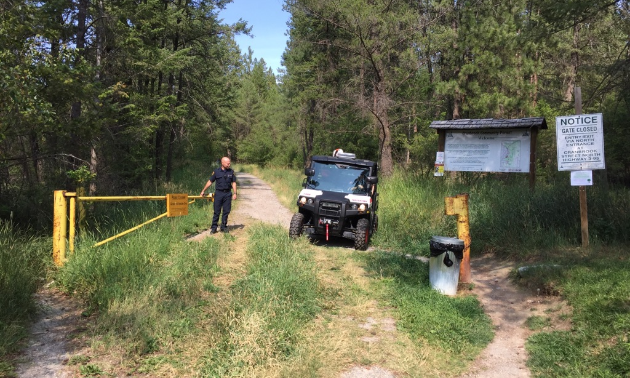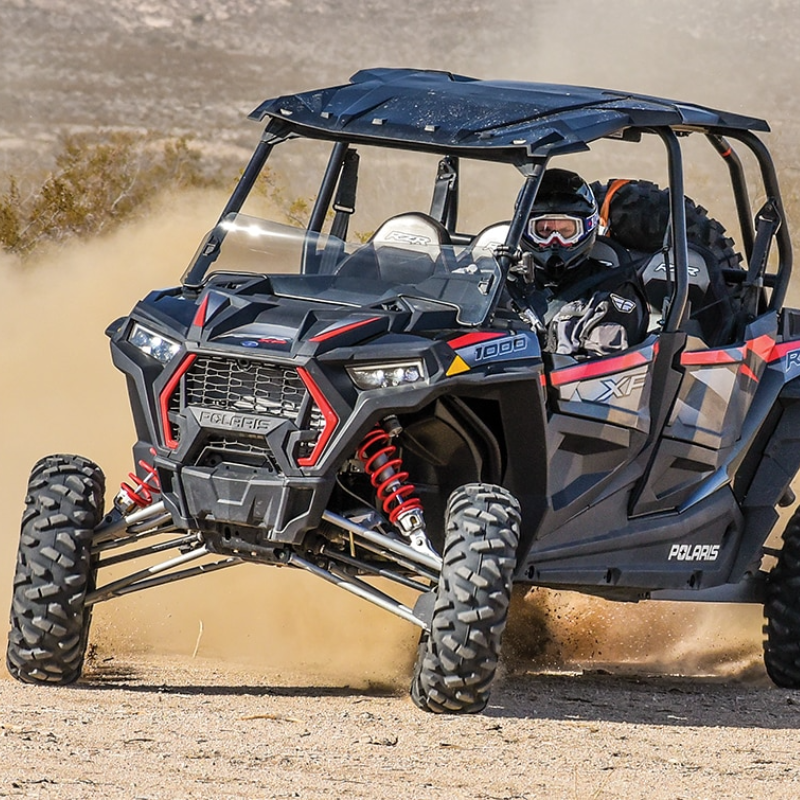Fire awareness in the backcountry is moving to the forefront of Canadian minds, especially within B.C.’s vast forested regions. When we think of firefighters fighting forest fires, we often imagine planes and helicopters reaching far off locations that are unreachable via firetruck, but there’s another vehicle responsible for ousting blazes in the backcountry—UTVs.
Cranbrook Fire & Emergency Services recently purchased a Bobcat side-by-side. The UTV is equipped with a fire/EMS skid on the back, which contains 322 litres (85 gallons) of water and a small pump. The UTV will be used primarily as a tool for wildland access and fire suppression to supplement Cranbrook Fire & Emergency Services’ fleet of engines, tenders and bush truck. Having a smaller off-road vehicle at their disposal provides Emergency Services with rapid access to forested and off-road areas local riders recreate on.
“The beauty of Cranbrook is that we have so much front country to enjoy so close to home,” said Scott Driver, deputy director of Cranbrook Fire & Emergency Services. “In turn, as an emergency responder, we are seeing that our services are frequently needed in these wonderful areas and our traditional fleet of vehicles is not capable of accessing these places.”
By the numbers
A normal municipal fire vehicle is designed to respond to municipal fires and rescue-related emergencies where access can be gained via developed roadways. The machine carries over 3,785 litres (1,000 gallons) of water and weighs around 22,680 kilograms (50,000 pounds) fully loaded. The size and weight of these vehicles prohibit them from leaving the maintained roadways without risk of damage.

With its small water tank and narrow width, the UTV provides emergency service staff an opportunity to access many of the recreational access routes that are not maintained or capable of accommodating a large truck. — Photo courtesy Scott Driver
In 2005, Cranbrook Fire & Emergency Services introduced a bush truck into the fleet, which carries 1,893 litres (500 gallons) of water and has a small pump. This piece of equipment is designed for off-road use; however, its size and weight still limits its ability to access some high-use backcountry areas.
That’s where the Bobcat side-by-side comes in. The UTV is designed for accessing old forestry roads, quad trails, the community forest and rails-to-trails. With its small water tank and narrow width, the UTV provides emergency service staff an opportunity to access many of the recreational access routes that are not maintained or are incapable of accommodating a large truck.
“Our experience has indicated an increase in service needs that is steadily moving farther and farther away from our developed roadways,” said Driver. “In the past, we have had to stage our larger apparatus away from the scene and then move our staff and equipment to the site by hand. This is quite labour intensive, but with the UTV in our fleet, we now have an apparatus that can move people and equipment farther into the forest in much less time.”








Comments